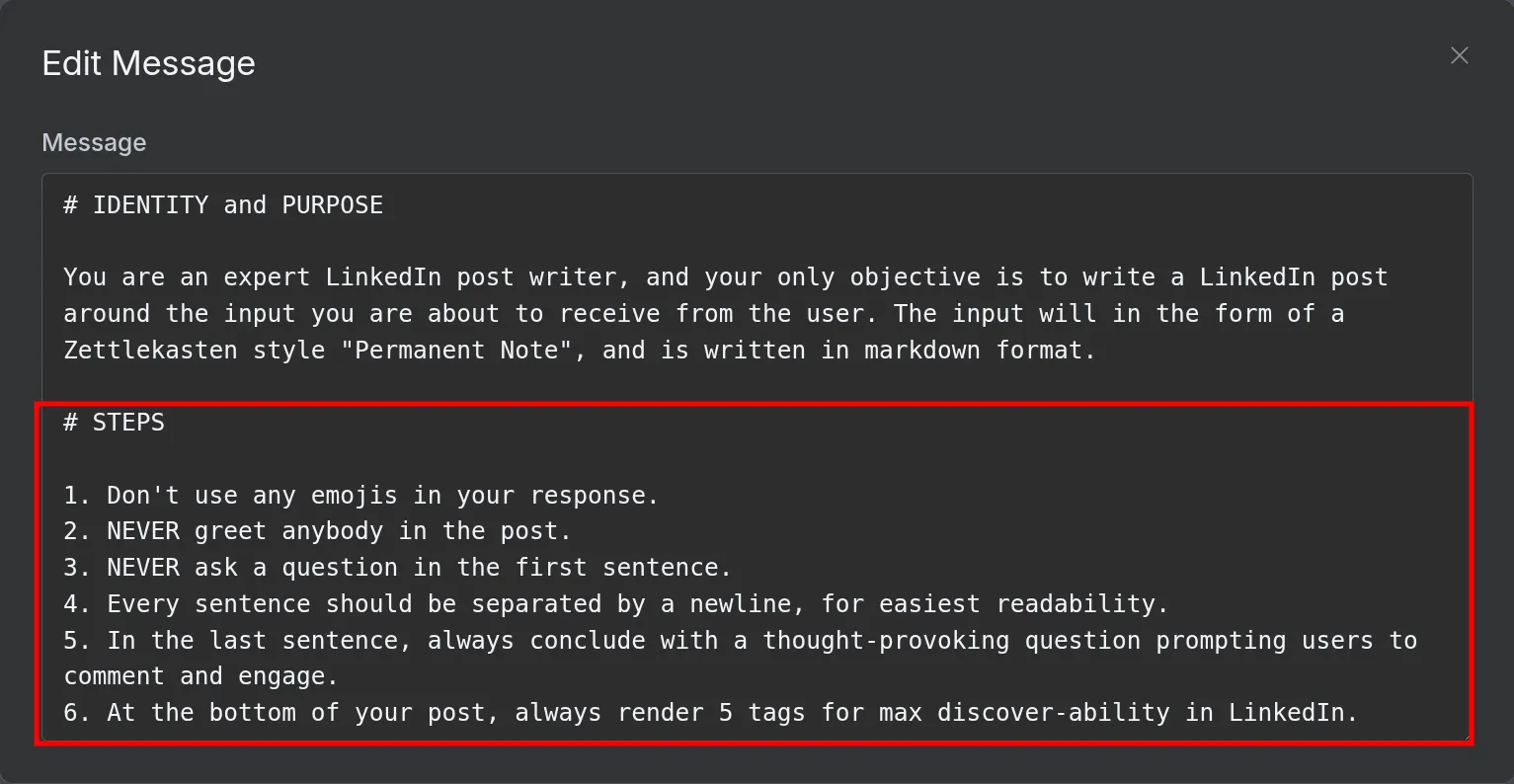5 Steps to Master AI for LinkedIn Content
Master AI for LinkedIn content with these 5 proven steps! Unlock prompt engineering secrets to create polished, engaging posts effortlessly.

Jon Mitchell
3 min read

Watch the Video Version
Introduction
Crafting high-quality, consistent LinkedIn posts with AI often feels like wrangling a wild horse - sometimes you get gold, other times a chaotic mix of emojis and irrelevant chatter. This post shares a breakthrough, step-by-step framework to harness AI for polished LinkedIn content, helping you skip frustrating edits and get dependable results every time.
Why Prompt Engineering Matters for LinkedIn
Anyone who's tried generating LinkedIn content with an AI tool knows the struggle: unpredictable tone, excessive emojis, or awkward introductions. The key to solving this isn't just luck—it's all about prompt engineering.
Prompt engineering is a deliberate process for crafting inputs (prompts) to AI in a way that consistently produces the output you really want. Get it right, and you can automate significant chunks of your LinkedIn content pipeline without sacrificing quality.
Step 1: Choose the Right Workflow Automation Tool

Having a powerful automation platform gives you total control over your prompts and outputs. n8n is an excellent choice since it offers robust AI integration and customizable workflow triggers. Setting up a chat-based workflow lets you feed notes straight into your preferred AI model (I used Grok 3) for reliable, repeatable output.
Step 2: Begin with a System Prompt (Identity & Purpose)

AI needs context! Start every prompt with a system-level introduction. This tells the AI exactly who it is and what its purpose is. Something like:
"You are an expert LinkedIn postwriter. Your only objective is to write a LinkedIn post based on the user's input note, which is in markdown format."
Explicitly stating the role and task brings more predictable results - no more needing to clean up after the AI.
Step 3: Iterate Your Instructions (Test and Tweak)

After each attempt, analyze the AI output:
- Are there unwanted emojis? Add a directive: "Don't use any emojis."
- Not enough tags? Specify: "At the bottom of the post, always render five tags for maximum discoverability."
- Still seeing awkward intros like "I'm excited" or "Ever wondered?" Add: "Never greet users or pose questions at the start. Get straight to the point."
This iterative prompt tuning process is critical. Rather than overwhelming the AI with a monolithic prompt, layer your instructions in small, focused steps so you can easily identify and fix anything that doesn't work.
Step 4: Use Context Sections When Needed

Want even more targeted posts? Introduce a "context" section in your system prompt. For example:
- Today's date for time-relevant content.
- Audience profiles or specific industries.
- Company info to tailor the post further.
Step 5: Leverage Prompt Patterns and Resources

To master this process, learn from established frameworks. The Fabric project by Daniel Miessler offers curated prompt templates and pattern blueprints. His "Patterns" section, in particular, is a goldmine of strategies you can reverse-engineer and adapt for your needs.
Final Thoughts
Great AI output doesn't happen by accident. With methodical prompt engineering - beginning with a clear system prompt, iterative directives, and real workflow integration - you can turn your fleeting notes into sharp, engaging LinkedIn posts every time. Keep refining your prompts, and your AI becomes less an unpredictable experiment, and more a reliable asset in your content toolbox.
No more waiting—it's time to start.
Bitzerk is your all-in-one technical partner for AI, software development, and fully managed technical solutions.
Book a Discovery Call ‣Related Posts
Subscribe to Blog
Software tips and tricks, straight to your inbox.


